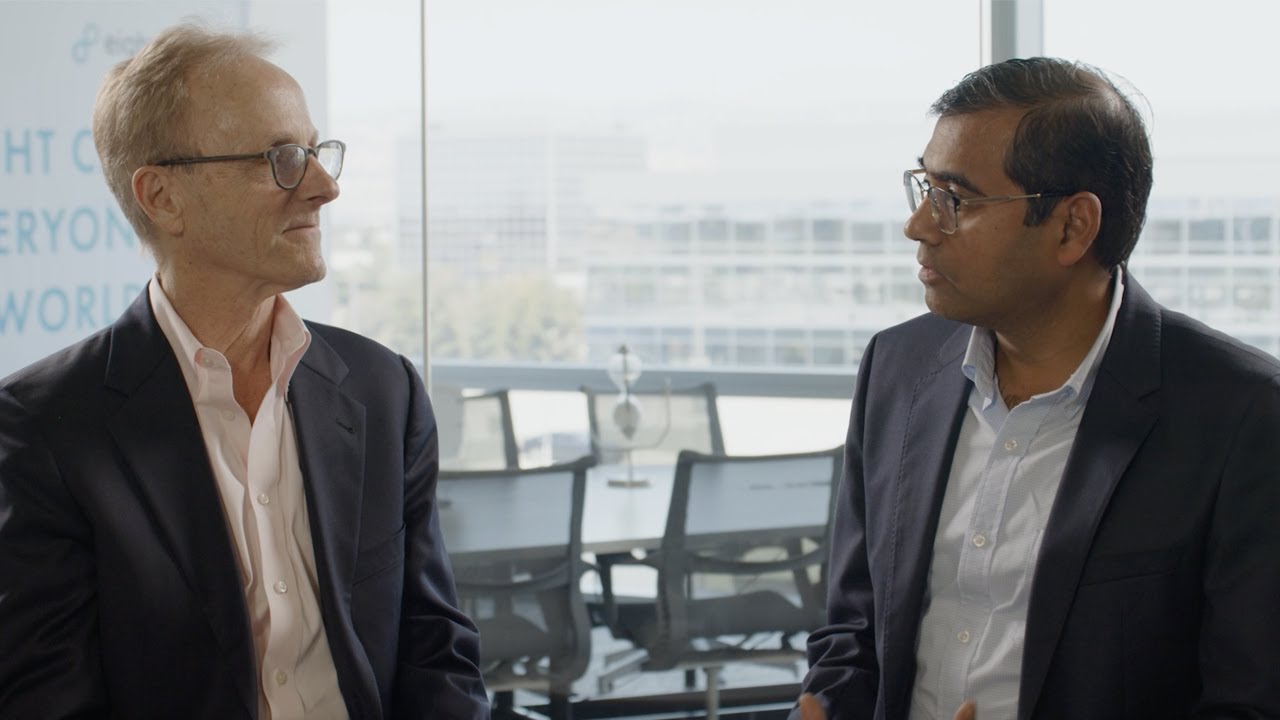From talent acquisition to management, the emphasis is shifting from résumés and traditional career pathing to uncovering everyone’s skills and potential with AI-powered talent intelligence. But what exactly is this emerging category in HR technology, how does it work, and what impact can it have on workforce planning and organizational success?
A truly intelligent talent platform uses the power of deep-learning AI to uncover the skills an organization needs to support its talent and overall goals. By using a skills-based approach, organizations can more easily align the right people to the right work, while also preparing people for future success. Organizations that use talent intelligence are more likely to find, hire, and retain the best people — and meet their overall objectives — than those that don’t.
As talent intelligence is a fairly new category in the HR space, here we’ll explain what it is, why it’s important, and the benefits an AI-driven approach can bring to any organization looking to fortify talent strategies, navigate uncertainty, and drive better business outcomes.

Related content: See Josh Bersin of The Josh Bersin Company and Eightfold AI Co-CEO and Co-Founder Ashutosh Garg talk about why every organization needs AI–powered Talent Intelligence.
Talent intelligence: What it is and what it does
As a talent-based organization, we know that 70 to 80 percent of people apply for the wrong jobs, get hired into roles that aren’t a great fit, and then power through a couple years or so before they leave an organization.
This happens for several reasons, including vague job descriptions that leave people applying for roles that aren’t right for them, or that don’t match their skills and interests. On the other side, hiring managers list skills that are already out of date or they don’t need. Connecting people with the right jobs has issues on both ends. And this can be easily corrected with talent intelligence.
We often talk to organizations that have already deeply invested in their HR tech stacks, like their Applicant Tracking System (ATS) or Human Resources Information Systems (HRIS), and are reluctant to add more. While these are great systems of record, they aren’t engineered to uncover the talent greatness needed to align their workforce with their organization’s goals. To achieve this in today’s fast-moving world of work, you need deep-learning AI that uses real-time data to make recommendations based on relevant skills and capabilities.
Talent intelligence is the engine that works to pair people — internal employees and external candidates — with the best roles for them. It helps talent and business leaders understand more about what people are capable of doing, while also providing a deeper understanding of what skills they can develop.
“From a candidate-experience perspective, it’s mind-blowing,” said Matt Hill, Senior Director of Talent Acquisition at Dexcom, the medical devices company that helps people monitor and manage their diabetes. “It’s a couple of clicks, and you have not only a set of jobs that look like they fit your background, but also descriptions of why — down to the skill level.”
Talent intelligence maps and aligns skills to your organization’s roles
The beauty of talent intelligence is that it’s not here to completely replace existing HR systems. It works with almost any HR technology and enhances what is already happening with recommendations based on deep-learning AI.
Talent intelligence does this by using deep-learning AI to define roles and integrate internal company data and external publicly available local and global data to help talent leaders make better decisions. It dynamically self-learns and evaluates skills within organizations and the larger market to give HR and business leaders a full and current view of the skills they need today and tomorrow. The results show leaders the complete view of what skills they have in their entire workforce, along with the training and hiring they need to keep pace in their industries.
For many organizations, an area where talent intelligence pays off is redesigning job architectures, one of the most tedious, time-consuming tasks any organization can undertake. With jobs and skills constantly evolving, it’s almost impossible to keep that information up to date.
“Companies are like your drawers at home in that they get more cluttered over time,” wrote Josh Bersin, Founder and CEO of The Josh Bersin Company, in his introduction to our Co-CEO and Co-Founder Ashutosh Garg’s book Deep Talent. “Every time a manager hires someone, they create a job and a rough list of responsibilities for that role. Before you know it, your company has 20 different job titles equating to ‘analyst,’ and dozens of ‘project managers’ scattered across the company.”
Talent intelligence brings order to job architecture chaos. It all starts with talent leaders knowing their start point — accurately assessing your workforce “as-is.” Talent intelligence will ingest current jobs and skills taxonomies to assess your job descriptions and associated skill sets. It will identify duplicate positions, and provide clearer and more consistent guidelines around roles and responsibilities. And it will continue to assess and modify job descriptions and roles based on fresh information, and identify places where new roles need to be filled. For the long term, it offers strategic recommendations for skills and positions that may not be needed now but will be soon.
All this culminates in a “jobs library,” where business and talent leaders can easily and quickly see the repository of roles and descriptions to help them build organizational design and hire to fill the gaps. This results in increased transparency and helps move current employees to new divisions, identifying them for upskilling or reskilling opportunities, and even succession planning. Talent acquisition leaders can be confident that the roles they’re listing are accurate and necessary, so they can also make more well-informed decisions to fill critical roles.
“At its core, the system is about making learning personal and purposeful, so knowing what skills you have, where you want to go, what you’ll need in three years’ time, and following recommendations on the learning required to get there,” said Marc Starfield, former Group Head of HR Programmes and Systems for British multinational telecom company Vodafone. “It allows us to bring together content from Vodafone and others, like LinkedIn, in one place, and use skills targeting to connect cohorts of people who want to develop in a certain direction, all as a single experience.”

Learn more about how Vodafone is using talent intelligence.
Talent intelligence can improve DEI and encourage new talent
As work evolves with many roles changing with new skill sets or becoming obsolete altogether, matching people to jobs based on their skills will be essential. This will also lead to discovering new talent — no matter their background — who show the potential to succeed.
Talent intelligence opens up and evens out the field for many who may not have considered or been considered before, including women, BIPOC, veterans, people with disabilities, and other underrepresented groups.
How is talent intelligence able to improve DEI? With the power of AI, it can take a person’s background, and based on its understanding of their career information and internal and external data on available roles, it can make suggestions about the right jobs for them. It can also show organizations best-fit candidates for open roles based on these assessments of their skills and capabilities.
Keep in mind that the recommendations are only as good as the data. It’s important that a talent intelligence platform uses aggregate learning based on large volumes of data, so it can give stronger recommendations and predictions. With aggregate data from internal and external data sources, like publicly available labor data, talent leaders can be more confident that the recommendations are more likely to meet privacy and security standards. We call this deeper look “profile enrichment” — it’s a more in-depth, multifaceted view of what’s most relevant about a candidate as it relates to their skills and potential.
Micron Technology is a world leader in innovating computer memory and storage solutions that accelerate the transformation of information into intelligence. As part of the company’s ambitious growth plans, they also want to improve DEI efforts.
Micron deployed talent intelligence to reimagine its talent management experience and take an employee-centered approach to career development and inclusion. After a candidate creates a profile on Micron’s site, the system analyzes the person’s experience, capabilities, and skills gaps, then provides insights on potential matches and recommendations to hiring managers for how to develop that candidate’s skills once they’re hired. Their platform also targets transitioning veterans to help them translate their skills to other work and assist recruiters in understanding if a military member’s skill set aligns to a job’s requirements.
Related content: Learn more about how Responsible AI works in our Talent Intelligence Platform.
Modern, holistic talent strategies demand talent intelligence
Today’s talent planning needs a more holistic approach. A talent strategy backed by talent intelligence can give HR and business leaders a better understanding of what they need talentwise today and in the future.
Talent intelligence shows leaders what skills they need and helps them determine the best approach — buy, build, or borrow — to acquire those skills. It also helps deliver a better employee experience to help organizations retain their talent by showing people how they can grow and advance their careers.
This complete view of all talent across the organization benefits everyone, ending the age of siloed information, HR and talent leaders working in a vacuum, and top talent looking elsewhere for their next opportunity.
Ready to learn more about talent intelligence?
Powered by AI, the Eightfold Talent Intelligence Platform empowers organizations to recruit and retain a diverse global workforce and provides applications for enterprises to build on their talent’s existing skills. Request a demo today to see how it can work for you.
